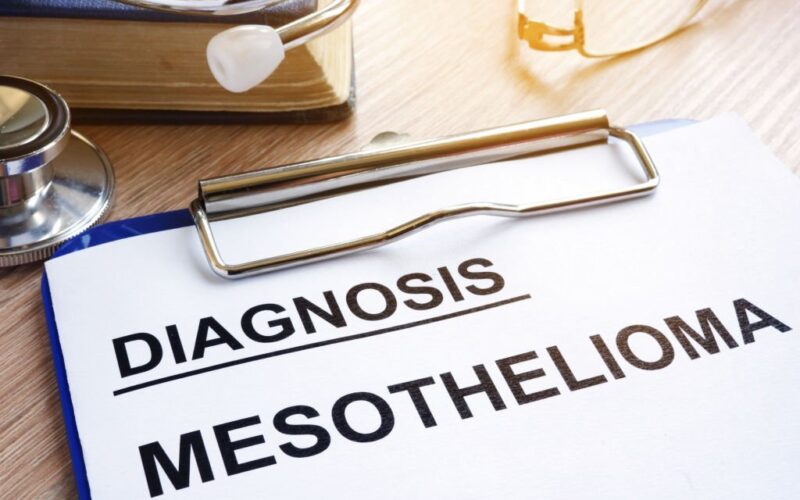What is Mesothelioma?
Mesothelioma is a cancer that affects the cells of the mesothelium, which is a protective membrane that surrounds many of the body’s organs. Mesothelioma is a cancer that affects the lining of the lungs, but it can also damage the lining of the heart and male reproductive organs.
The common types of mesothelioma are pleural and peritoneal mesothelioma. In some cases, the cancer can develop in the pericardium, which is the lining of the heart. This is called pericardial mesothelioma.
The cancer can develop in the membrane around the testicles. Testicular mesothelioma is a type of cancer that affects the testicles.
What causes mesothelioma?
The most notorious cause of mesothelioma is asbestos exposure. About 70 to 80% of all cases of the cancer occur as a result of exposure to asbestos. When asbestos is broken, only tiny particles are released into the air.
READ ALSO: Mesothelioma- Symptoms in the Early Stages
These particles can then be breathed in, which increases the chance of getting the cancer in the future. Workers in construction (roofing, building demolition), mining, and milling mechanics are more likely to be exposed to asbestos products.
Asbestos doesn’t seem to be a factor in childhood mesothelioma. Children who have had other types of cancer and were treated with radiation therapy are more likely to get mesothelioma.
Mesothelioma symptoms

Some of the symptoms of malignant pleural mesothelioma tumors may be the same as those of lung cancer and other conditions that affect the lungs or chest pleural effusion. A complication of the disease is the build-up of fluid in the chest, which can make it hard to breathe.
Common Symptoms of Pleural Mesothelioma
- Chest pain
- A dry sometimes painful cough
- Shortness of breath
- Difficulty swallowing
- Weakness or fatigue
- Back pain
- Unexplained weight loss
The Common Symptoms of Peritoneal Mesothelioma

Symptoms of peritoneal mesothelioma include
- Abdominal pain
- Abdominal swelling (ascites)
- Night sweats
- Nausea
- Fever
- Unexplained weight loss
- Fatigue
- Diarrhea
- Constipation
- Loss of appetite
Less than 20% of all cases of the cancer are caused by peritoneal mesothelioma.
Testicular and Pericardial mesothelioma

Pericardial and testicular mesothelioma are very rare. The symptoms of Pericardial mesothelioma may be similar to those of other heart conditions, such as
- Heart palpitations or irregular heartbeat
- Difficulty breathing
- Night sweats
- Chest pain
One known symptom of testicular mesothelioma is hydrolysis, which is a buildup of fluid in the scrotum.
Mesothelioma Treatment
There is currently no cure for mesothelioma, some patients are encouraged to seek active treatment, which include
- Chemotherapy therapy
- Radiation therapy
- Surgery
A combination of these treatments may help some people maintain disease control for a longer period of time. Different treatments are used for the two kinds of mesothelioma.
Chemotherapy
Chemotherapy medications are designed to kill cancer cells while causing the least amount of harm to healthy cells.
The most commonly used chemotherapy drugs for treating pleural mesothelioma include pemiterks with cisplatin or carboplatin. Chemotherapy for pleural mesothelioma aims to extend life and shrink the cancer.
Surgery
Pleural mesothelioma can be actively treated with two main types of surgeries. Extrapleural pneumonectomy (EP) removes the tumour, the pleura of the affected lung, the diaphragm, and a part of the lining of the heart. Plumectomy with pulmonary decortication (PD) removes the pleura.
Trimodality therapy
Some people with the cancer are treated with trimodality therapy. It is a mix of chemotherapy and radiotherapy.
Treating Symptoms
When mesothelioma is found at an advanced stages, the main goal of treatment is to control and manage the symptoms for as long as possible. Fluid buildup can cause shortness of breath, which can be fixed by surgery.
In video-assisted thoracoscopic surgery, some of the linings of the chest wall and lungs are taken out. During the surgery, sterile talc is injected into the pleural cavity to cause inflammation. This closes the pleural cavity and stops fluid from building up again.
To get rid of chest pain or drain fluid that has built up in the lungs, more extensive open surgery can also be done.
People who aren’t good candidates for video-assisted thoracoscopic surgery or open surgery may get an indwelling pleural drain, which lets fluid be drained once or twice a week, depending on how quickly the fluid builds up again.
The medical treatment team will talk with the person about the best ways to treat other symptoms, like not being able to sleep, pain, tiredness, loss of appetite, and weight loss.
Ask your doctor to evaluate any persistent signs and symptoms you’ve noticed in yourself that seem unusual or bothersome.


1 comment